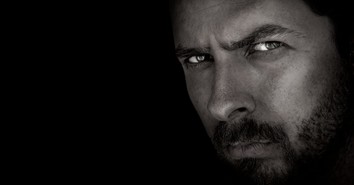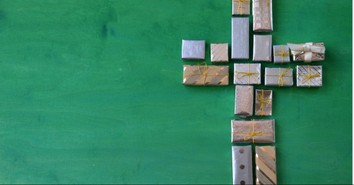A Ship Full of Ideas: Lesson Plans on the Titanic

“Hast thou entered into the springs of the sea? Or hast thou walked in the search of the depth? Have the gates of death been opened unto thee? Or hast thou seen the doors of the shadow of death? Hast thou perceived the breadth of the earth? Declare if thou knowest it all...” [God answering Job] (Job 38:16–19).
“We are all on the Titanic. The reason we cannot stop talking about the great liner is because the Titanic is about everything.” —John Wilson Foster
On April 14, 1912, the Titanic, touted as the “world’s safest ship” on its maiden voyage from Southhampton, England, to New York City, collided with an iceberg, and sank. A total of 1,523 people died. This event left an indelible mark in history. This year will mark the anniversary of that fateful night. We can commemorate it in our classrooms with lesson plans that span the curriculum.
The lessons that follow would be most suitable for middle and high school-aged students but could be modified for use with younger children. These activities focus on research and critical thinking, urging students to delve a little deeper and see God’s hand at work.
History
- Read books about the Titanic. There are also some useful websites, including these: www.history.com/interactives/titanic-interactive, www.history.com/topics/titanic, www.history.com/videos/titanic-deconstructed, www.titanic-facts.com, and www.webtitanic.net.
- Make a timeline of shipbuilding through history. This website is suitable for grades K– 6 but could serve as a jumping-off point for older children as well. It even features the sound of a foghorn!
- Build a boat!
- In 1985 the wreckage of the Titanic was discovered off the coast of Newfoundland. Historians and scientists teamed up to analyze the evidence and learn more about the story of the accident. What new evidence did they uncover? What role does science play in history? How does it aid in piecing together evidence and telling stories of the past?
- Research eyewitness testimonies of the sinking. Compare these accounts with the history books. How do they differ? What do you find in first-person accounts that you don’t find in the history books? What are the limitations of first-person accounts? This could also lead to an English lesson on point of view.
Social Science
- There were 2,208 passengers and crew aboard the Titanic at the time of the accident. Who were they? Why were they sailing? Where were they headed? Who were some better-known passengers? Who were some lesser-known passengers? An online resource for this information can be found at www.encyclopedia-titanica.org.
- The passengers were divided into three classes: first-, second-, and third-class. How did they differ, and how were their accommodations different?
Ethics
- The captain of the ship, Captain Edward John Smith, received a telegraph report from New York at 9 a.m. on the fateful day, warning him of icebergs. He passed this information to his lunch guest, J. Bruce Ismay, the builder of the ship. Ismay shared the information with only a few passengers but otherwise kept it to himself until 7:15 p.m. Smith and Ismay were aware of the potential danger but failed to act on it. What should they have done? What would you have done? What is our responsibility if we know about something dangerous?
- Who was responsible for the sinking of the ship? One person? A group of people? God?
Math
- Perhaps due to the fact that it was deemed the “world’s safest ship,” the Titanic had only twenty lifeboats, enough for half its passengers. Likewise, it didn’t have enough life jackets for all the passengers. What was the capacity of the ship? How many life jackets did it carry? What is wrong with this kind of thinking?
- What was the speed of ship? The crew had planned on proceeding “full speed ahead” the night of the crash. Why? What was their target speed? Why was it so important to them to reach that speed?
Science
- The temperature of the sea continued to drop. The air temperature was 0°C, and the sea temperature dropped to a half degree below freezing just prior to hitting the iceberg, making it the most vulnerable to damage. What was the temperature of the sea?
- Study how salt water freezes at a lower temperature than fresh water.
- How have sonar mapping, 3D modeling, and forensic analysis given us more clues to the story?
- Conduct a study of icebergs.
Language
- While researching the story, compose a vocabulary list of relevant terms for students to define. Include words such as frigid, submersible, sonar, protocol, maritime, steerage, perilous, etc.
- Read poems written about the Titanic, including “The Destroyer” and “Heroes of the Titanic,” found at www.webtitanic.net/framepoem.html.
- Employing historical fiction, write a brief biography of one of the Titanic’s less famous passengers.
Music
- The Titanic was sinking yet the band continued to play. Why? What songs did they play?
- It has been said that the band contributed to the death toll that night, making all seem fine when in actuality there was an emergency. Research music psychology. Where is it used and why?
Art
- Study how the ship is depicted in art. Some paintings portray an almost fairytale-like depiction of the doomed ship. Why would the artist do this? How does this depiction differ from what we see in photographs on the same subject?
Film
- Watch the films A Night to Remember and Titanic and compare them. What was the producer’s aim in each film? How was it accomplished? Which movie was more enjoyable to watch? Which movie taught you more about what actually occurred on the ship? If possible, attend a theatrical production about the Titanic and discuss how it compares with the films.
God’s Sovereignty
- The temperature dropped at just the right time (or wrong time?) to make the ship most vulnerable to damage. This would lead some to believe that the crash was not indeed an accident but an event ordained by God. What do you think? Is there a line where God’s control of the universe ends and man’s begins?
- Exploring the story of the Titanic will help students better understand this important historical event. It will also teach them about God’s sovereignty in their own lives. It is his hand that writes history. Whether we live as “first-class” citizens or as second-class citizens or way down in steerage, we will meet obstacles in life. They are unavoidable, because God puts them there for our good and his glory. He charts our course. Will we trust him to sail our ship?
Amy is married to DJ, her high school sweetheart. They homeschool three wonderful children--a computer genius, an artist, and a princess. When not tending her chickens or children or husband, Amy enjoys writing. She hopes to make a career of it some day. Maybe when the chickens move out. Amy can be contacted at amylynn.nicholson@gmail.com.
Copyright 2012, used with permission. All rights reserved by author. Originally appeared in the April 2012 issue of The Old Schoolhouse® Magazine, the family education magazine. Read the magazine free at www.TOSMagazine.com or read it on the go and download the free apps at www.TOSApps.com to read the magazine on your mobile devices.
Publication date: April 11, 2014
Originally published April 11, 2014.







